Why is the Decembrist fading and what to do?
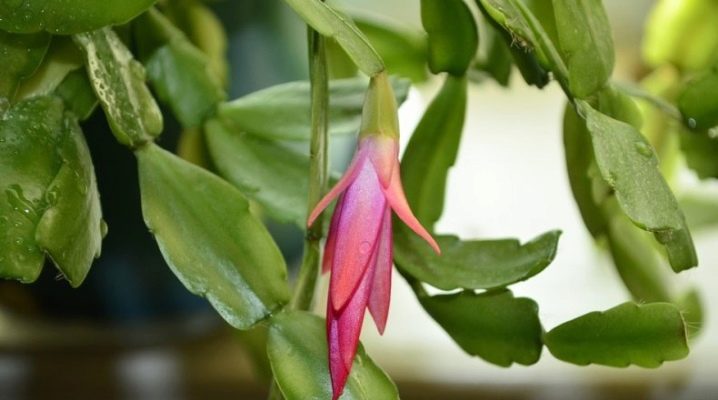
A native of the tropical rainforests of Brazil, zygocactus, popularly known as the Decembrist or Christmas cactus, has long and firmly won the hearts of indoor floriculture lovers. Beautiful multi-tiered flowers adorn the plant for two to three winter months. With simple, proper care Schlumberger blooms every year. But sometimes the Decembrist withers, stops blooming and, in the end, dies.
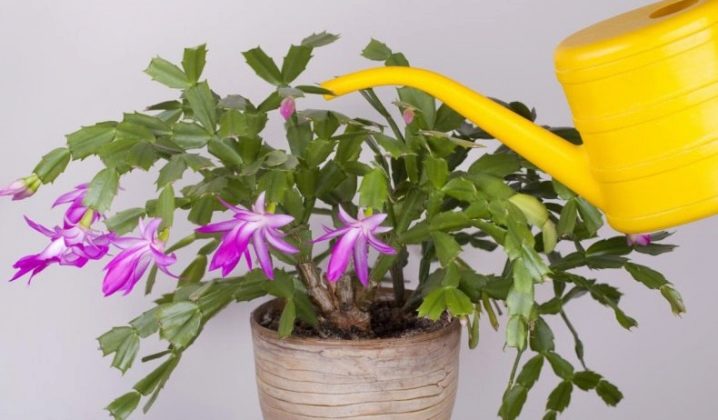
Causes of the disease and their elimination
Care errors
The most common problem is associated with improper care. Like all cacti, the Decembrist calmly refers to dry soil or rare top dressing. According to experts, the rule applies to zygocactus: it is better to underdone than to pass. To preserve the decorativeness of Schlumberger, you need to know the causes of the problem.
Dry leaves cause excessive sunlight, too dry air and stressful situations. To avoid drying out the sheet plates, it is better to put the flower on the windowsills of the western or southwestern windows. If it is impossible to put the plant pot away from the bright sun, the epiphyte should be shaded.
If the Christmas tree has soft leaves or sheds them, then the plant has problems with the root system or it is infected with parasites.

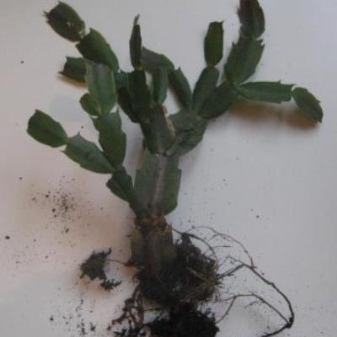
Too moist soil at excessively low or high air temperatures causes decay of Schlumberger roots and the development of putrefactive processes in the pot. This happens due to overflow and when the flowerpot overheats, when the roots dry up and burn out. Most often, overheating of the pot occurs because the flower is standing in the sun or directly above the central heating battery. In the overheated earth, fermentation processes easily occur, leading to the death of the flower. Also leads to the burning of roots excess nitrogen.
You can determine the damage to the root system by observing the plant: if the flower is unstable or comes out of the soil, then the roots of the cactus have rotted. You can revive a Christmas tree:
- by rooting living healthy segments to obtain new seedlings;
- by transplanting the diseased flower into another dish, removing the dead part of the roots.

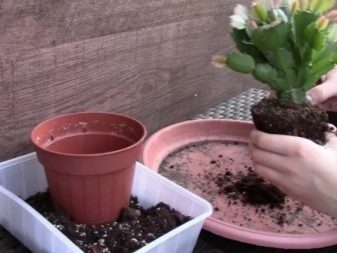
Fungal diseases
Another reason lies in fungal diseases. If the zygocactus wilted, became pale and rots at the root, it means that the plant is infected. Most often, the Decembrist falls ill:
- late blight;
- pithium (a type of root rot);
- fusarium.
Basically, the infection of the plant occurs through the infected soil. Some diseases develop very quickly. So, the pitium can destroy a flower within a few hours. The disease begins with the defeat of the roots, then the buds and leaves wither and fall. As a result, the plant dies. With late blight, the trunk of the plant turns yellow, starting from the root collar, the leaves become soft and fall off. With fusarium wilting, the leaves of the zygocactus are not fleshy, but dry and covered with light green or yellowish spots.
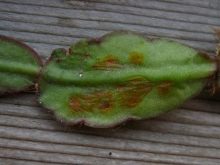


For the prevention and fight against diseases of late blight and pitium, the Decembrist is treated with solutions of drugs:
- "Speed" - 0.5 ml for half a liter of water;
- "Maksim" - 5 drops in a 200-gram glass of water;
- "Topaz" - 1 ml for 5 liters of water;
- "Vitaros" - 0.5 ml per 0.5 l of water, twice with a break of 10 days.


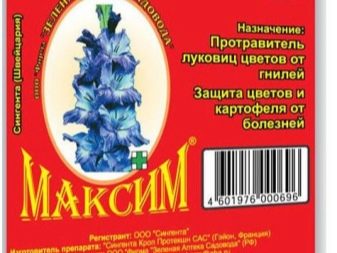
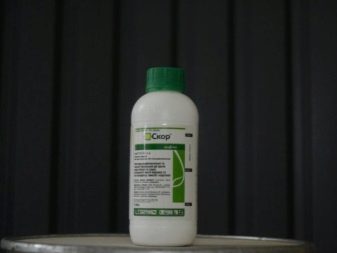
If Fusarium is affected, treatment can only help at an early stage of the development of the disease. The flower can be treated with a solution:
- Fitosporin;
- "Sporbacterin";
- the drug "Mikol" and other antifungal agents.

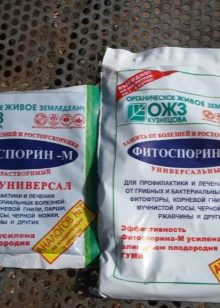

If the disease is started, it is impossible to save the Decembrist. It remains only to burn the diseased plant, and disinfect the soil and the pot.
To prevent infection of the flower, a few days before planting, the soil substrate should be treated with boiling water, and a couple of days before planting, the biological product "Trichodermin" or its analogs should be introduced into slightly moist soil.
Damage by parasites
Not only fungus or root decay lead to the death of the Decembrist. If the leaves dry and turn yellow, and upon examination, yellow-brown spots up to half a centimeter in size are visible on them, it means that the flower is wound up sucking pest - scale insect. Despite its diminutive size, this parasite brings significant harm, and if you do not pay attention to the problem in time, the plant will die. The most suitable breeding environment for scale insects is very humid air.... But the insect does not like high temperatures, which can be used to prevent the development of the affected area.
To combat the parasite, mechanical cleaning of the leaves with a cotton swab dipped in a solution of "Karbofos" or "Tanrek" is suitable. If insecticides are not available, home remedies will do.
- Dissolve 40 grams of laundry soap and 5 drops of kerosene in 1 liter of water. Stir well. Wipe the affected areas with the mixture;
- Insist one finely chopped onion in a glass of water for 2-3 hours.
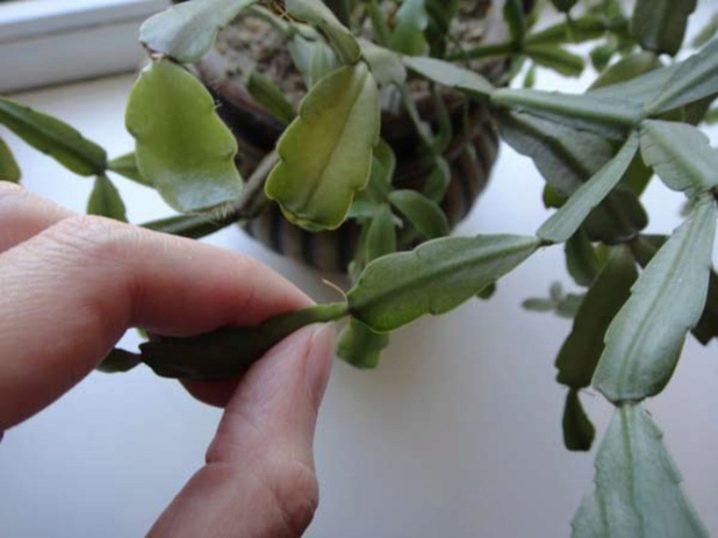
Often late blight disease is accompanied by a spider mite lesion. Small insect of green, red or brown color reproduces well in warm and very dry climates, causing stunted growth, wilting and shedding of leaves. To combat this parasite, they are sprayed with Fitoverm, Apollo and other anti-mite insecticides containing phosphorus and sulfur. After a few days, it is necessary to re-process. The length of the break depends on the temperature in the room:
- at 19 ° C, repeat the treatment after 8-10 days;
- at 28 ° C and above, wait 3-4 days.
From folk remedies to combat spider mites, spraying the leaves with a solution of laundry soap is used.
Leave the applied solution to dry completely for a couple of hours, then gently wash the Christmas tree with clean water, removing soap residues, and cover with a plastic bag for a week or a little longer. After 7 days, repeat the treatment and at the same time increase the humidity.

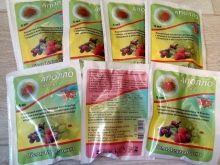
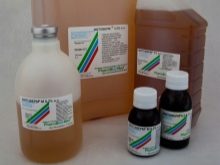
White bloom on the leaves and in the nodes of the plant indicates that the zygocactus is attacking the mealybug. A pinkish oval pest with transverse stripes on its back, covered with a whitish downy, is a sucking insect and causes considerable harm, especially during flowering. In a damaged plant, flower buds dry out and fall off, leaves dry, and the plant itself is covered with a white bloom of dried mucus.
Prevention of a mealy parasite is in the regular removal of dead leaves and timely watering of the plant.
If the pest has already started on the Decembrist, then twice spraying the zygocactus with a solution of "Confidor" or a similar preparation will help to cope with it.

What if the leaves turn red?
Sometimes the leaves of an outwardly healthy plant begin to turn red. There are several reasons for this.
- Too much bright light when Schlumberger wakes up from a blooming bloom. This usually happens in the spring and summer. To protect the flower from redness, you need to rearrange the plant, where the light is diffused.
- Lack of phosphorus leads to a decrease in chlorophyll, and the leaves turn red. Correctly selected fertilizers will correct the situation, and the plant will delight with the rapid growth of bright greenery.
- Red leaves signal excessive soil moisture. The regulated irrigation regime will solve the problem.
Younger sprouts may also have a reddish color around the edge, but nothing needs to be done here.As soon as the leaf grows up, it will turn green.

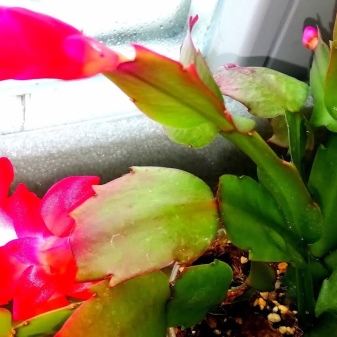
Care rules
So that the Decembrist actively grows and pleases with rich flowering, you need to follow several rules for caring for a Schlumberger:
- the size of the pot should be slightly larger than the root of the plant and have a good drainage pad;
- watering through the pallet as needed when the soil dries up;
- spray, wipe the leaves and sometimes gently bathe the flower in the phase of active growth, covering the soil from excessive moisture;
- protect the flower from excessive heat, direct sunlight and drafts;
- feed with suitable fertilizers, taking a break before flowering;
- replant once every four years, when the flower has entered the resting phase;
- the flower does not like unnecessary movements, especially during flowering.
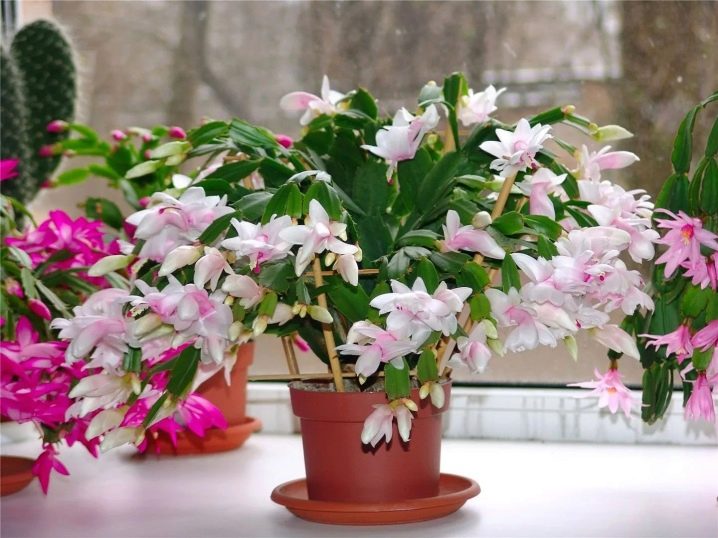
Zygocactus can be attributed to unpretentious plants, so following these simple steps will help keep the Decembrist healthy. And if suddenly the plant is sick, do not lose your head. A solution can be found for any task.
Why the Decembrist is withering, see the video below.























































The comment was sent successfully.